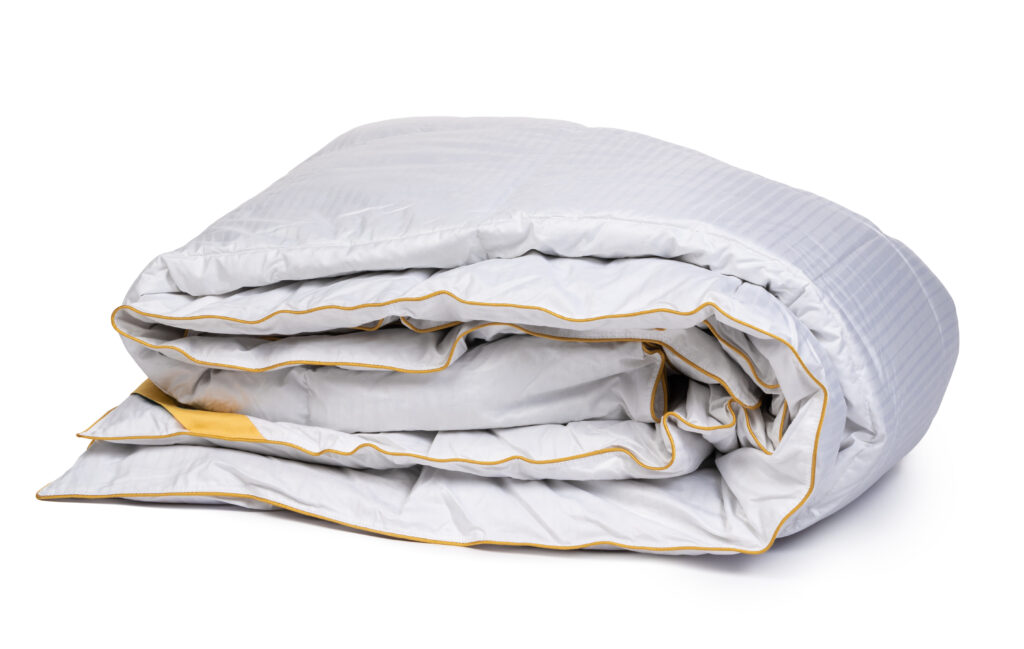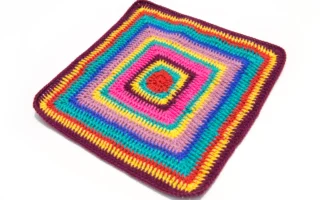Introduction:
Weighted blanket have grown in popularity due to their ability to give comfort while also reducing anxiety and tension. It is a specific kind of bedding that has become popular because of its unique therapeutic advantages and comfort. These blankets differ from other blankets because its fabric is evenly filled with material like glass beads or plastic pellets.
These blankets are intended to encourage relaxation, reduce anxiety and enhance the quality of sleep. They are based on the idea that light pressure can relax the nervous system which is one of the primary ideas of sensory integration therapy. This article will further discuss about the weighted blankets, science behind them, advantages of these amazing blankets, its different types, how to wash weighted blanket in order for long lasting lifespan of these blankets.
Table of Contents
What is Weighted Blanket:
These blanket are exactly what it sounds like: a blanket that has been evenly filled with materials for adding weight like glass beads or plastic pellets. When used, these blankets are designed to distribute light pressure equally throughout the body and available in a variety of sizes and weights often weighing between five and thirty pounds.

Science behind Weighted Blanket:
The use of these blankets is based on the Deep Pressure Stimulation (DPS) concept which has been proven to cause the release of neurotransmitters like serotonin and dopamine, hence encouraging relaxation and lowering stress levels. Melatonin, the hormone in charge of controlling sleep cycles is also stimulated by the extra weight.
Advantages of Weighted Blanket:
Better Sleeping Conditions
Their ability to enhance sleep is one of its main advantages. The light pressure makes it easier for people to fall asleep to have deeper and more restful sleep. Those who suffer from sleeplessness or restless legs syndrome can find this to be extremely helpful.
Stress and Anxiety Reduction
They provide a calming impact that reduces tension and anxiety. The pressure creates a feeling of a comforting embrace encouraging security and calmness. They can be a useful tool for controlling panic attacks and anxiety disorders.
Disorders of Sensory Processing
They offer comfort for those with sensory processing problems such as autism or ADHD. The deep pressure can improve focus and attentiveness while regulating sensory input.
Relief From the Pain:
These blankets can help persons with chronic pain disorders since moderate pressure helps relieve their suffering and reduce discomfort. To increase overall comfort, they are occasionally used together with other pain treatment strategies.
Relaxation and Stress Management:
Weighted blankets are often used as a tool for relaxation and stress reduction whether individuals are reading, watching TV or engaging in mindfulness exercises. The blanket is a great addition to routines for managing stress since its calming effect can promote serenity and relaxation.
Better Sleep for Children:
They are also available for kids who can use them to create better sleep habits, reduce anxiety before bed and have better sleep overall.
Types of Weighted Blanket:
Standard Weighted Blankets:
The most popular kind of weighted blankets are called standard weighted blankets and they are available in a variety of weights, fabrics and sizes. Standard weighted blankets serve a variety of functions including enhancing sleep quality, lowering anxiety and promoting calmness.
Adult Weighted blankets:
These blankets are made to fit the size and weight of adults. They often provides a greater variety of weight options and bigger lengths to accommodate individual tastes.
Children’s Weighted Blankets:
These blankets are smaller in size and contain kid-friendly lesser weights specifically created for children. They often have patterns or designs aimed for children.
Cooling Weighted Blankets:
These blankets are constructed of breathable and temperature-regulating fabrics. Weighted blankets with cooling properties are ideal for people who become overheated when sleeping or living in warmer locations.
Dual-Sided Weighted Blankets:
These blankets allow users to select the side that is most comfortable because each side has a unique texture or material. As an example, one side can be soft and cuddly while the other is smoother and colder.
Therapeutic Weighted Blankets:
These blankets may have particular qualities for those with sensory or therapeutic requirements and are created with occupational therapist assistance. For those with diseases like autism spectrum disorders or sensory processing difficulties, they are often advised.
Also Read: Crochet Blanket
Why Cleaning Matters:
Hygiene:
Over time, your blanket accumulates dust, sweat, and body oils, which can lead to an unhygienic sleeping environment.
Extended Lifespan:
Regular cleaning can make your weighted blanket last longer and saving you money in the long run.
Allergen Control:
Regular washing helps eliminate allergens that may be trapped within the fabric improving air quality and reducing allergy symptoms.
Odor Prevention:
Cleaning removes unpleasant odors that can develop over time by ensuring your blanket remains fresh.
How to Wash Weighted Blanket:
It is very important to know how to wash weighted blanket as it makes sure to keep your blanket last longer. Following are the tips and tricks to ensure durable results:
Step 1: Examine the care label:
Always read the care label on your weighted blanket before you start. There may be unique cleaning guidelines for some blankets that must be followed. You can use this information to choose the best washing technique.
Step 2: Remove the Cover:
Many weighted blankets include coverings that can be removed. Remove it before washing if your blanket has one. Usually, the cover can be machine-washed separately.
Step 3: Pre-Treat Stains:
Pre-treat any stains on your blanket before washing. Make use of a moderate stain remover or a solution of water and soft detergent. Directly apply the solution to the stain and then wait a few minutes before proceeding.
Step 4: Choose the Right Washing Machine
For smaller weighted blankets, a standard home washing machine should suffice. However, for larger and heavier blankets, consider using a commercial machine or taking it to a laundromat. Ensure the machine is clean and free from the dirt.
Step 5: Use a Mild Detergent:
To wash your blanket, consider using a gentle and hypoallergenic detergent. Bleach and other strong chemicals should be avoided since they might harm the fabric and weighted filling.
Step 6: Use a Gentle Cycle while Washing.
Set the delicate cycle on your washing machine and use cold water. The weighted filler can be harmed or distributed unevenly at high temperatures.
Step 7: Balance the Load:
Add a few towels or sheets to the load to balance it and save your washing machine from being overloaded. This makes the weight more equally distributed.
Step 8: Thoroughly Rinse:
Rinse your blanket well to get rid of any detergent residue after the wash cycle. Before continuing, make sure the water is clear.
Step 9: Carefully Dry:
Most blankets should be air-dried or tumble-dried on low heat. Check the care label for specific instructions for drying. Avoid hanging a wet, heavy blanket as it can stretch and lose its shape.

Conclusion:
In conclusion, weighted blankets have proven themselves to be more than just cozy accessories. They offer a range of benefits, from improved sleep to stress reduction and pain management. Cleaning your weighted blanket is a simple yet essential task to maintain its hygiene and longevity. By following these steps, you can ensure that your weighted blanket continues to provide you with the comfort and relaxation you need.
FAQ’s:
How frequently should I wash my weighted blanket?
It’s recommended to wash your blanket every 2-3 months or as needed if stains occur.
Can I wash the inner pellets of my blanket?
No, it’s best to avoid washing the inner pellets as they may become damaged. Focus on cleaning the outer cover.
Can fabric softener be used when washing my blanket?
It’s advisable to skip fabric softener, as it can affect the texture and effectiveness of your blanket.
What if my washing machine is too small for my blanket?
Consider taking your blanket to a Laundromat with larger machines or using a commercial washer.



